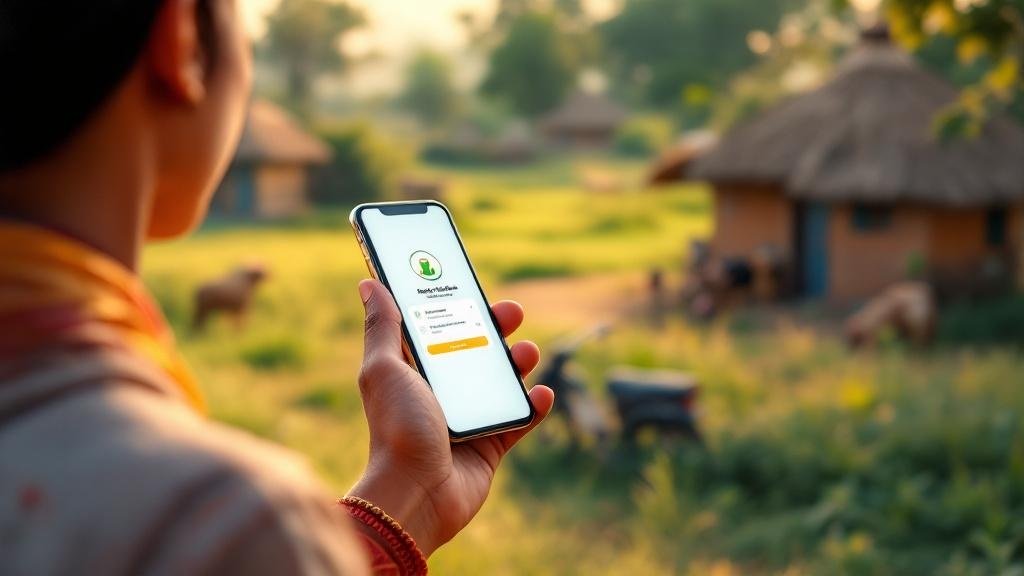In the modern era, mobile banking is revolutionizing the way we manage our finances. While urban areas have embraced this convenience, rural communities often face barriers in accessing traditional banking services. But things are changing. Mobile banking is now making its way into rural areas, bridging the gap and providing financial services to those who need them the most.
In this guide, we’ll explore mobile banking for rural areas, how it works, and why it’s such a vital tool for improving financial inclusion in underserved communities. We’ll also dive into the challenges, solutions, and the future of mobile banking services in rural areas.
What is Mobile Banking?
Mobile banking refers to using your mobile device (smartphone, tablet, etc.) to perform financial transactions. This can include checking account balances, transferring money, paying bills, or even applying for loans—all without needing to visit a physical bank branch.
In rural areas, where banking infrastructure may be limited, mobile banking serves as a convenient and cost-effective solution. It enables people to access banking services from the comfort of their homes, without the need for long trips to a distant bank or ATM.
Key Features of Mobile Banking:
Account Management: Check balances, view recent transactions, and download statements.
Money Transfers: Send money to family, pay bills, or transfer funds to other accounts.
Mobile Payments: Pay for groceries, utilities, and more using mobile wallets or UPI.
Loans and Insurance: Apply for microloans and insurance plans designed for rural customers.
Customer Support: Access customer service through in-app chat or helpdesks.
For rural populations, the ability to handle financial tasks from a mobile phone is a game-changer, offering financial empowerment in rural regions.
The Need for Mobile Banking in Rural Areas
Rural areas are often underserved when it comes to banking facilities. In many regions, access to banking in rural villages is limited, leaving communities without the financial services they need. According to the India Mobile Financial Services Report, nearly 50% of the rural population in India has limited or no access to traditional banking.
Here’s why mobile banking for rural areas is so crucial:
Distance from Banks: Many rural regions are located far away from city centers where bank branches and ATMs are available. In some cases, people have to travel miles just to access basic banking services.
Limited Bank Infrastructure: Many rural areas lack adequate mobile banking infrastructure, and setting up physical bank branches is often not cost-effective for banks.
Financial Inclusion: Mobile banking enables the digital financial literacy in rural communities, allowing people to engage in financial activities that were previously out of reach. This is key to financial inclusion in rural areas.
Increased Financial Security: Mobile banking offers a safe, paperless way to handle money. It reduces the need for cash transactions and minimizes the risk of theft.
Boosting Local Economies: With easy access to financial services, people in rural areas can now save, invest, and plan for the future, thus contributing to the overall growth of their local economies.
Rural Mobile Banking Solutions
Several mobile banking solutions have been designed specifically to cater to the needs of rural users. These solutions address the unique challenges faced by rural communities, such as low internet connectivity, low smartphone penetration, and limited digital literacy.
1. Mobile Wallets and Payment Systems
Mobile wallets for rural areas allow people to store money digitally and make payments using their mobile phones. These wallets are often linked to bank accounts via mobile in rural regions, enabling users to make easy transfers and pay for goods and services.
Example: Google Pay, PhonePe, and Paytm are popular mobile payment systems in India, offering services that include money transfer, bill payments, and online shopping. These platforms are designed to be simple and user-friendly, making them ideal for rural users.
2. UPI (Unified Payments Interface)
UPI for rural areas enables fast, real-time money transfers using a smartphone. UPI has become a popular method of mobile payment systems for rural users due to its simplicity and low cost.
Example: In rural India, mobile banking adoption through UPI has soared, allowing people to send money to family members, pay for local goods, and access government welfare schemes like subsidies.
3. Mobile Banking Apps and SMS Services
For areas with limited smartphone penetration, SMS banking services are a vital tool. These services allow customers to check balances, transfer funds, and get account updates using basic feature phones.
Example: SBI’s mobile banking via SMS provides a simple, no-internet-required solution for rural users who don’t have access to smartphones.
4. Agent-based Mobile Banking Solutions
Remote banking solutions have been created where agents, often locals, help residents access mobile banking services. These agents act as intermediaries, guiding users through the process of registering for banking services, making transfers, or withdrawing cash.
Example: In rural India, India Post Payments Bank (IPPB) has collaborated with local agents to provide mobile banking infrastructure for rural regions.
Benefits of Mobile Banking in Rural Areas
1. Increased Access to Financial Services
Mobile banking provides easier access to rural digital banking services. Whether it’s checking account balances or transferring money, these services are now available to everyone, regardless of where they live.
2. Reduced Dependency on Cash
In remote banking solutions, the use of cash is minimized. People can now make payments using mobile wallets or UPI, which reduces the risks associated with carrying cash, such as theft or loss.
3. Cost-Effective for Banks
Operating in rural areas can be costly for banks due to low customer density. Mobile banking adoption in rural India offers a more affordable alternative, as banks don’t need to build physical branches in every remote area.
4. Empowerment of Underserved Communities
Mobile banking allows underserved communities to become financially independent by giving them access to the tools and knowledge needed to manage their finances. This boosts local economies by promoting financial empowerment in rural regions.
Challenges in Mobile Banking for Rural Areas
While the benefits are clear, there are also challenges to widespread mobile banking access in remote areas:
1. Low Smartphone Penetration
Many rural areas still have low levels of smartphone adoption. While rural smartphone penetration is steadily increasing, many people still rely on feature phones, which limits access to mobile apps.
2. Connectivity Issues
Poor internet connectivity in remote areas can make it difficult for people to use mobile banking services. However, this is gradually being addressed with initiatives like 5G rollouts and improved mobile network infrastructure for rural regions.
3. Lack of Digital Literacy
Despite efforts to promote digital financial literacy in rural communities, many people are still unfamiliar with how mobile banking works. This makes training and support crucial to ensure successful technology adoption in rural areas.
The Future of Mobile Banking in Rural Areas
The future of mobile banking for rural areas looks promising. As rural financial inclusion initiatives grow and smartphone usage continues to rise, the digital divide will shrink.
Here are a few trends to watch:
Government and Private Sector Collaboration: Initiatives like Jan Dhan Yojana (financial inclusion program) and PMGDISHA (Digital Literacy Mission) are working towards improving digital literacy and mobile banking adoption in rural areas.
Rise of Digital-Only Banks: Neobanks and other digital banking solutions tailored for rural populations will provide more accessible and affordable options.
Micro-Insurance and Micro-Loans: Mobile banking services will expand to include micro-insurance and micro-loans, enabling rural populations to access credit and insurance products designed for their needs.
FAQs About Mobile Banking for Rural Areas
1. How can mobile banking help improve financial inclusion in rural areas?
Mobile banking provides financial access to underserved communities, helping people manage their money, make payments, and save—all without the need for a physical bank branch.
2. Is mobile banking safe in rural areas?
Yes, mobile banking is secure. Banks use encryption and other security measures to protect users’ data and transactions. However, it’s important to use secure networks and avoid sharing personal information with unauthorized sources.
3. What are the challenges of mobile banking in rural areas?
The main challenges are low smartphone penetration, poor internet connectivity, and lack of digital literacy in rural communities. However, initiatives are underway to address these issues.
4. Can I access banking services without a smartphone?
Yes, many banks offer SMS banking services for people who don’t have smartphones. These services allow users to check balances and make transfers via text messages.
5. What is the future of mobile banking in rural India?
With rising smartphone penetration, improved digital literacy, and government initiatives, mobile banking will continue to expand, providing greater financial inclusion and empowerment to rural populations.








Comments (0)